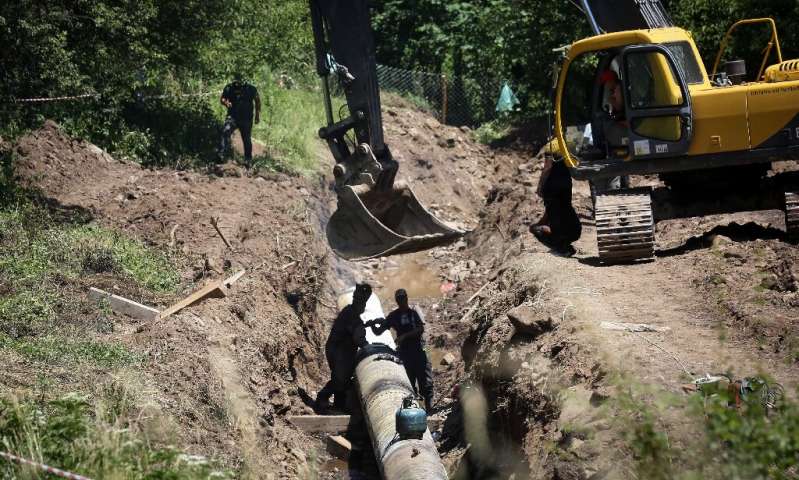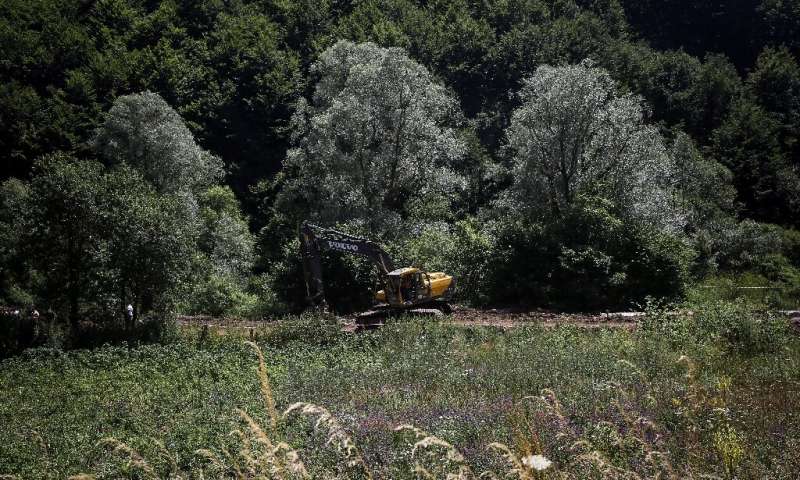
Coal habit
Serbia relies on coal for some 70 percent of its electricity, with hydropower accounting for around a quarter. Wind and solar power currently provide only a tiny fraction of its energy.
But the country, which is negotiating EU accession, is keen to reduce reliance on fossil fuels and has signed up to an ambitious renewables target of 27 percent by next year.
The European Commission said the country was "not yet on course" to meet the target in a 2018 report.
The focus has turned to water.
So far, about 100 small hydropower plants have been constructed in Serbia, according to the environment ministry.
The EPS state power company is offering heavy subsidies—committing to buy electricity generated by small hydropower plants at a price 50 percent higher than the market rate.
That has attracted wealthy individuals, many with no prior experience.
Contacted by AFP, EPS referred to the energy ministry which did not reply.

Rakita locals here have spent two years fighting against the power plant
According to Milos Bakovic Adzic, of the Right to Water association, these plants have become an "easy way" to earn money.
The Belgrade lawyer who finances the Rakita plant could not be reached by AFP.
'No magic wand'
The environmental impact of small-scale hydropower is not a secret, said Dragan Josic, head of the national association of private investors in the sector.
But "it's nothing compared with the effect produced by coal-fired power plants," he told AFP.
"There is no magic wand, if we want electricity we have to produce it from the potential we have."
According to a recent study by the Health and Environment Alliance non-governmental organisation, coal pollution is responsible for premature death of 570 people annually in Serbia, the heaviest toll in the Balkans.
But Ratko Ristic, dean of the Forest sciences faculty at Belgrade University, sees coal as a pragmatic option.
"We simply cannot close the power stations and go back to the stone age," he said.
According to projections dating from the 1980s, he notes some 856 small hydropower plants were earmarked for Serbia, but argues they would produce only "two to three percent of our annual electricity needs".
But they would put "into tubes 2,400 kilometres (1,488 miles) of rivers in the most vulnerable regions", he said.
RiverWatch and campaigners EuroNatur say there is another way—arguing that nations could meet or even exceed the power from small hydro projects with other renewables, particularly solar and wind.
Rakita has seen its population wither from 2,000 people to just 200
'Without drinking water'
In January, Rakita residents found an ally in the environment ministry, which ordered a halt to construction work.
Minister Goran Trivan said at the time that the energy "contribution" of such plants "is small compared to the damage" caused.
But the ban had no effect, because it has to be implemented by other government departments.
Abandoned and dilapidated houses now dot the village, which has seen its population wither from 2,000 people to just 200.
Even if their protest fails, some are determined not to give up.
"We will stay without drinking water and Rakita's people can move out," said Dobrica Stoicev, a 59-year-old unemployed worker, sipping his beer in front of the local grocery store.